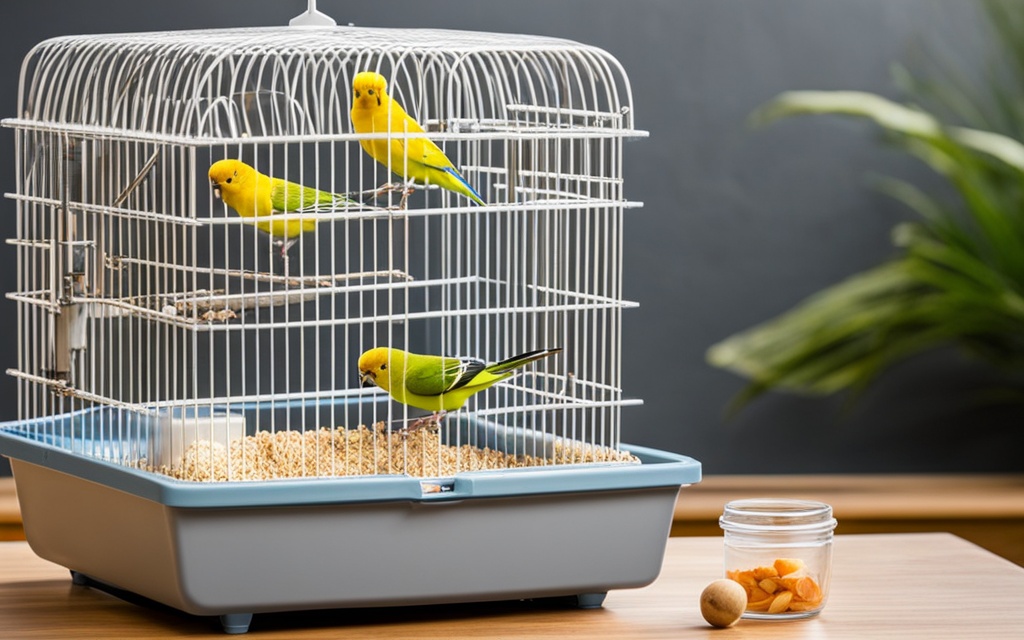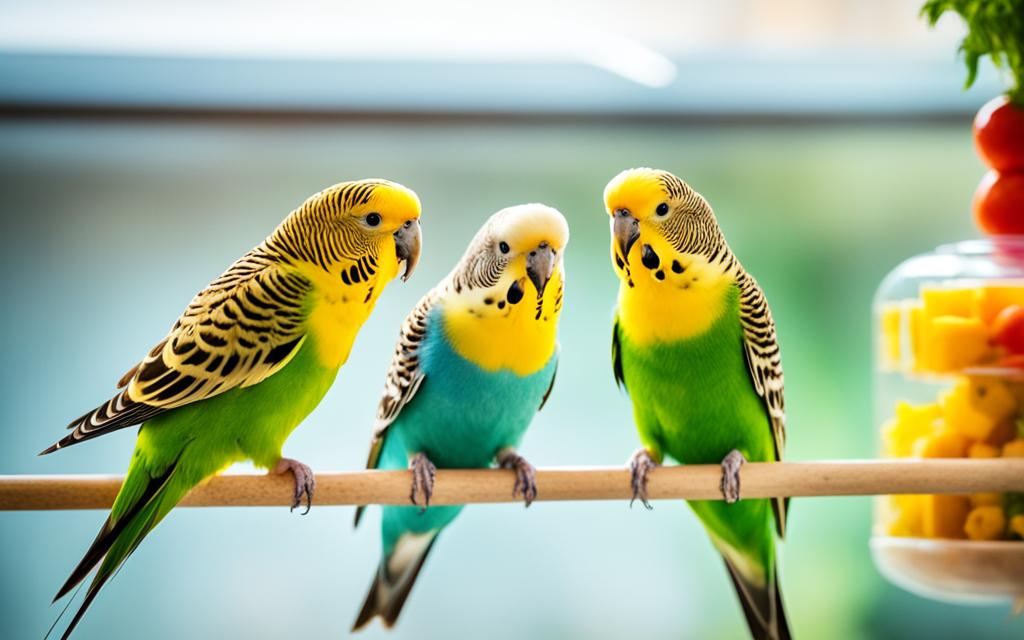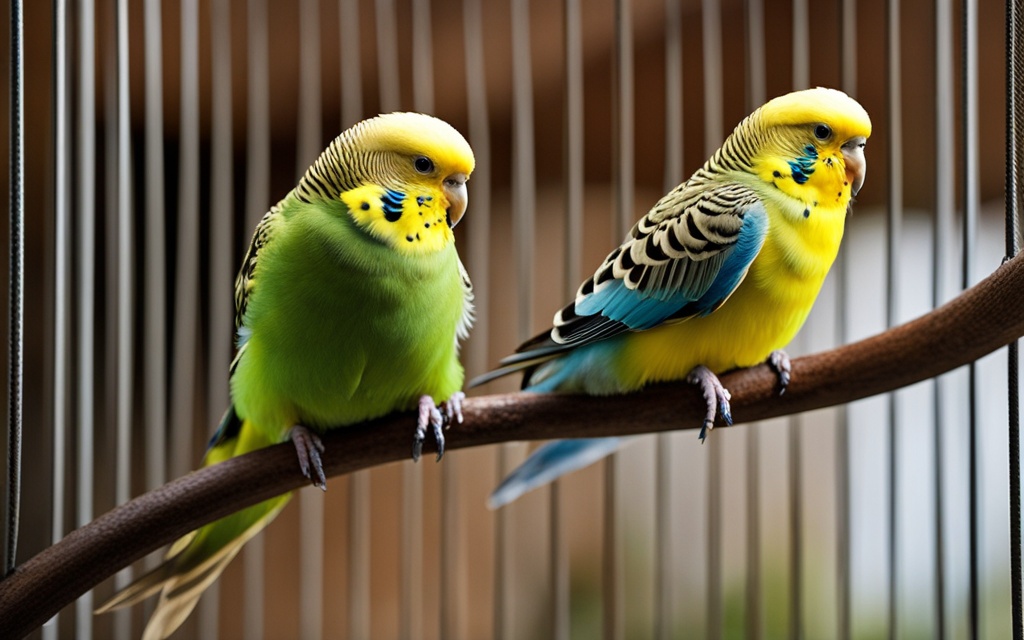As the famous naturalist and environmentalist John Muir once observed, “The world’s a wilderness full of wonders, waiting to be explored.” This sentiment rings true when it comes to the captivating world of budgerigars, also known as parakeets. These delightful feathered companions have captured the hearts of countless pet owners, and with good reason. This comprehensive guide provides in-depth information on caring for budgerigars as pets, covering the intricate details of homemaking, feeding, medicine, hygiene, and care.
Whether you’re a seasoned budgerigar enthusiast or a newcomer to the world of these charming birds, this article will serve as your trusted companion, ensuring your feathered friend’s well-being and happiness. From setting up the ideal home to understanding their unique nutritional needs, and from maintaining their health to fostering a strong bond through training and socialization, this guide will equip you with the knowledge and tools necessary to provide the best possible care for your budgerigar.
Key Takeaways
- Comprehensive guide to caring for budgerigars, also known as parakeets, as pets
- Covers essential aspects of budgerigar ownership, including homemaking, feeding, medicine, hygiene, and care
- Valuable information for both new and experienced budgerigar owners
- Ensures the well-being and happiness of your feathered companion
- Provides essential tips and insights for creating the ideal living environment and meeting the unique needs of budgerigars
Understanding Budgerigars: An Introduction
Budgerigars, also known as parakeets, have captivated the hearts of bird enthusiasts worldwide for centuries. These vibrant and charismatic avian companions have a rich history that spans the globe, with their origins tracing back to the budgerigars native to the vast and diverse landscapes of Australia.
Origins and History
The budgerigars have a longstanding history as a beloved pet species, with evidence of their domestication dating back to the 18th century. These resilient and adaptable birds were initially discovered in the wild, thriving in the arid and semi-arid regions of Australia. Over time, the careful breeding and selective cultivation of budgerigars has led to the development of a wide array of color variations, contributing to their enduring popularity as household companions.
Physical Characteristics and Appearance
One of the most striking features of budgerigars is their vibrant and diverse plumage. These small parrots typically measure between 7 to 8 inches in length and weigh approximately 1 to 1.5 ounces, making them a compact and delightful addition to any home. With their distinct hooked beaks, rounded heads, and long, tapered tails, budgerigars possess a unique and captivating appearance that has captured the imagination of bird enthusiasts worldwide.
Personality Traits and Behavior
Budgerigars are renowned for their lively and sociable personalities, making them highly engaging and rewarding pets. These intelligent and curious birds thrive on interaction and are known for their ability to mimic human speech, a trait that has endeared them to countless individuals. Additionally, budgerigars are known for their playful and energetic nature, often engaging in acrobatic displays and entertaining their owners with their lively antics.
Setting Up the Ideal Budgerigar Home
When welcoming a budgerigar into your family, it’s crucial to create a safe, comfortable, and stimulating environment for your feathered friend. This section will guide you through the process of choosing the right cage and accessories, as well as establishing a living space that caters to the unique needs of these active and social birds.
Choosing the Right Cage and Accessories
The size and design of a budgerigar’s cage play a significant role in their overall well-being. Opt for a spacious, rectangular cage that allows your budgerigar to move freely and spread their wings. The minimum recommended cage size is 24 inches wide, 18 inches deep, and 24 inches tall, but larger is always better. Choose a cage made of durable materials, such as powder-coated steel or sturdy wire, to ensure your budgerigar can’t escape or injure themselves.
In addition to the cage, consider investing in essential accessories that will enhance your budgerigar‘s living environment. These may include perches of varying sizes and textures, feeding bowls, water dishes, and toys that encourage natural behaviors like climbing, swinging, and chewing. Providing a variety of stimulating elements will keep your budgerigar physically and mentally engaged.
Creating a Comfortable and Stimulating Environment
Once you’ve selected the perfect cage, focus on creating a comfortable and stimulating environment for your budgerigar. Ensure the cage is placed in a quiet, low-traffic area of your home, away from direct sunlight, drafts, and household noises that could stress your feathered friend. Line the bottom of the cage with a safe and absorbent substrate, such as paper or wood shavings, and add perches at different heights to encourage natural movement.
Providing your budgerigar with a variety of toys and foraging opportunities is essential for their mental and physical well-being. Rotate various stimulating items, such as ladders, swings, bells, and chewable toys, to prevent boredom and encourage natural behaviors. Remember to monitor your budgerigar‘s interactions with the toys to ensure their safety.
 accessories
accessories
of your
budgerigar
‘s cage, as well as creating a comfortable and
stimulating environment
, you’ll be well on your way to providing your feathered friend with a safe and enriching home.
Budgerigars: Feeding and Nutrition
Proper nutrition is essential for the health and well-being of budgerigars. These vibrant pet birds require a balanced diet that provides the essential nutrients they need to thrive. By understanding the key components of a budgerigar’s dietary needs, owners can ensure their feathered friends receive the optimal nutrition for a long and happy life.
Essential Nutrients and a Balanced Diet
Budgerigars are omnivores, meaning they require a diverse diet that includes a variety of seeds, pellets, fresh fruits, and vegetables. A well-balanced diet should provide the necessary proteins, carbohydrates, fats, vitamins, and minerals to support their metabolic needs, feather health, and overall physical condition. Incorporating a high-quality budgerigar pellet as the dietary staple, supplemented with a variety of fresh, safe foods, is an excellent way to ensure your budgerigar receives a complete and balanced nutrition.
Safe and Unsafe Foods for Budgerigars
While budgerigars can enjoy a diverse array of foods, it is crucial to be aware of the safe and unsafe options for their health. Safe foods for budgerigars include leafy greens, such as kale and spinach, as well as fruits like berries, bananas, and apples. On the other hand, foods to avoid include avocado, chocolate, onions, and salt, as these can be toxic or harmful to budgerigars. Careful selection and portion control of safe foods will ensure your budgerigar receives the necessary nutrients without risking their health.
Proper Feeding Techniques and Schedules
Establishing a consistent feeding schedule and using the correct feeding techniques are crucial for maintaining the optimal health and nutrition of your budgerigar. It is generally recommended to provide a mix of pellets and fresh foods twice a day, with clean, fresh water available at all times. Portion sizes should be appropriate for the size and age of your budgerigar, and any leftover food should be removed to prevent spoilage and bacterial growth. By following these feeding techniques and schedules, you can ensure your budgerigar receives the necessary nutrition for a long and healthy life.
Budgerigars: Health and Hygiene
Maintaining the health and hygiene of your budgerigars is crucial for their overall well-being. This section explores the common health issues these feathered companions may face, as well as effective preventive measures to keep them thriving. Additionally, it provides guidance on proper grooming and feather care, along with the importance of maintaining a clean and hygienic living environment.
Common Health Issues and Preventive Measures
Budgerigars are generally hardy birds, but they can be susceptible to various health problems if not properly cared for. Some of the most common health issues include respiratory infections, parasitic infestations, and feather-related disorders. To prevent these issues, it is essential to maintain a clean and stress-free environment, provide a balanced diet, and regularly monitor your budgerigar’s health. Regular veterinary check-ups can also help identify and address any underlying health concerns early on.
Grooming and Feather Care
Proper grooming and feather care are crucial for the health and appearance of your budgerigars. These birds, being naturally preening creatures, will often groom themselves, but they may require your assistance to keep their feathers in optimal condition. Regular bathing, nail trimming, and beak conditioning can help maintain their overall hygiene and prevent the development of feather-related issues, such as feather plucking or breakage.
Maintaining a Clean and Hygienic Living Space
A clean and hygienic living environment is essential for the well-being of your budgerigars. Regularly cleaning their cage, perches, and toys can help prevent the buildup of bacteria, mold, and other contaminants that can lead to health problems. Additionally, proper ventilation and maintaining the appropriate temperature and humidity levels in their living space can contribute to their overall health and comfort.

Budgerigars: Training and Socialization
Effective training and socialization are essential for building a strong, trusting bond between you and your budgerigar. By investing time and effort into these aspects of budgerigar care, you can help your feathered friend become a well-behaved, confident, and affectionate companion.
Building Trust and Bonding with Your Budgerigar
The foundation of a successful training and socialization process is trust. Budgerigars are naturally social birds, but they may initially be wary of unfamiliar humans. To build trust and bond with your budgerigar, it’s crucial to approach them with patience, gentleness, and consistency.
Start by spending quality time near their cage, allowing them to get accustomed to your presence. Offer treats by hand and engage in gentle training exercises to demonstrate that you are a reliable and trustworthy caretaker. As your budgerigar becomes more comfortable, gradually introduce them to new experiences and environments, always ensuring they feel safe and secure.
Basic Training Techniques for Budgerigars
Once you’ve established a strong bond with your budgerigar, you can begin incorporating basic training techniques to help them become well-behaved and comfortable in their home. Start with simple commands like “step up,” where your budgerigar learns to step onto your finger on cue. Positive reinforcement, such as offering their favorite treats, is an effective way to encourage and socialize your feathered friend.
Other fundamental training techniques include teaching your budgerigar to stay calm during handling, come when called, and even perform tricks. By engaging in regular, patient training sessions, you’ll not only strengthen the bond between you and your budgerigar but also ensure they become a well-adjusted and confident companion.
Conclusion
In this comprehensive guide, readers have explored the essential aspects of caring for budgerigars, also known as parakeets, as beloved pets. From understanding the origins and physical characteristics of these vibrant birds to setting up their ideal living environment, feeding them a balanced diet, maintaining their health and hygiene, and fostering a rewarding bond through training and socialization, this article has provided in-depth information to ensure the well-being and happiness of budgerigars.
By following the guidance and tips outlined in this guide, readers can confidently welcome a budgerigar into their homes and provide the necessary care to nurture a long-lasting and rewarding companionship. Remember, responsible budgerigar ownership requires patience, commitment, and a deep understanding of their unique needs and behaviors, but the joy and enrichment they bring to one’s life make the effort well worth it.
Whether you are a new or experienced budgerigar owner, this article has served as a comprehensive resource to help you create a safe, stimulating, and loving home for your feathered friend. Embrace the joys of budgerigar ownership and embark on a journey filled with playful interactions, captivating vocalizations, and the unforgettable bond that can develop between you and your beloved pet.




